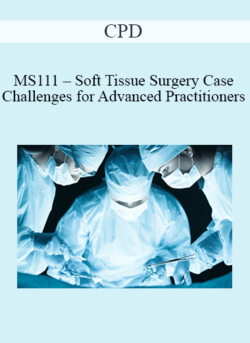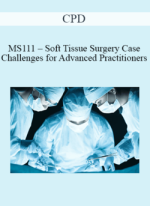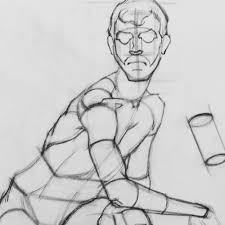[Pre-Order] – Deliver digital download link within 4-8 business days after successful payment. Please contact us to get more details. Purchase CPD – MS111 – Soft Tissue Surgery Case Challenges for Advanced Practitioners Mini Series courses at here with PRICE $479 $114MS111 – Soft Tissue Surgery Case Challenges for Advanced Practitioners Mini Series£347.00 (+VAT)12 months access to recordings and course materials is included. Please note that these are webinar recordings and not live events. Full details on how to access the Mini Series will be emailed to you.This Mini Series is tailored towards Advanced Practitioners and those studying towards Advanced Practitioner statusJoin Alison Moores BVSc(Hons) CertSAS DipECVS MRCVS for three 2-hour online sessions and get expert advice on challenging casesComprehensive notes to downloadedSelf-assessment quizzes to ‘release’ your 8 hours CPD certification (don’t worry, you can take them more than once if you don’t quite hit the mark first time)A whole year’s access to recorded sessions for reviewing key pointsSuperb value for money – learn without travellingWatch the recordings on your iPad!This Mini Series was originally broadcast live in May 2016. ProgrammeSession 1: Emergency Surgery of the Urinary TractMany conditions of the urinary tract present as emergencies. Obstruction and urinary tract rupture rapidly lead to life-threatening azotaemia and blood gas/electrolyte abnormalities that must be corrected before anaesthesia. Urinary diversion techniques are useful to allow animals to be stabilised prior to definitive surgery.What you’ll learn:Medical management of blocked animals prior to anaesthesiaTips on unblocking cats and dogs with urethral obstruction, including retrohydropropulsionEmergency urinary diversion techniques for animals that can’t be unblockedPigtail cathetersCystotomy tubes via mini laparotomyThe urethral tear – how to avoid it, diagnosis and surgical optionsPerforming perineal urethrostomy in cats and scrotal urethrostomy in dogs – hints and tipsAdditional case studiesUnusual presentations of urolithiasisUrinary tract trauma Session 2: Blunt and Penetrating TraumaIn this session, we’ll use a series of cases to demonstrate how some complex and severe injuries and trauma were managed. The presentation will include plenty of photographs to demonstrate how these cases should be assessed on arrival, as well as the emergency surgery they underwent and discussion of post-operative management. We’ll explore and explain the potential complications and difficulties in dealing with these types of case.Examples of cases include:Oropharyngeal stick injuriesPenetrating stick injuries of the thoracic wallBite woundsPrepubic tendon /body wall ruptureAirway traumaWhat you’ll learn:Emergency management of penetrating trauma cases, including placement of chest drains, blood transfusions and anaesthetising the critical patientLavage and debridement techniques; managing open woundsHow to explore a neck wound and diagnose/manage oesophageal penetrationDifferentiating penetrating tracheal wounds from other neck wounds and decision making in repair techniquesHow to repair body wall rupturesPotential complications of treating injuries, how to avoid them and how to treat them if they occur Session 3: Advanced Gastrointestinal SurgeryGastrointestinal surgery is commonly performed in general practice and vets will undertake gastrotomy and enterotomy early in their careers. However mistakes can occur and some cases can prove more challenging. This session will include some basic information on improving suturing techniques before moving to more complex cases including the use of stapling devices to create a functional end-to-end anastomosis, managing the dehisced enterotomy/enterectomy site with septic peritonitis and a case example of linear foreign body in the dog. Other case examples will include small intestinal, caecal, colonic and rectal mass resection.Perineal hernia/rupture occurs in some entire male dogs. Case examples in this webinar will include managing bladder entrapment within the hernia and use of a semitendinosus muscle flap after failure of a standard repair with an internal obturator flap.Anal sac apocrine gland adenocarcinoma may have different clinical presentations. Management of hypercalcaemia, resection of the anal sac mass, diagnosing and treating metastasis and adjuvant chemotherapy will be discussed.What you’ll learn:Optimal suturing skills for intestinal surgeryHow to perform a stapled intestinal anastomosisManaging intestinal surgery dehiscenceMedical management of septic peritonitis prior to surgeryManaging a linear foreign bodySurgical procedures for managing complicated perineal hernia/rupture including cystopexy, colopexy and semitendinosus flapsPerforming anal sacculectomy for anal sac apocrine gland adenocarcinomaAdjunctive treatment options for anal sac apocrine gland adenocarcinomaSalepage: https://cpd-solutions.com/store/product/ms111-soft-tissue-surgery-case-challenges-for-advanced-practitioners-mini-series/Archive: https://archive.ph/wip/4aTlfPurchase CPD – MS111 – Soft Tissue Surgery Case Challenges for Advanced Practitioners Mini Series courses at here with PRICE $479 $114
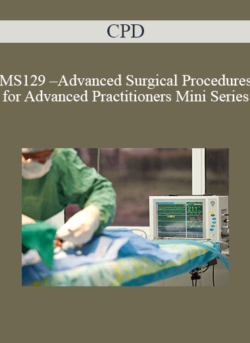 CPD – MS129 – Advanced Surgical Procedures for Advanced Practitioners Mini Series
₹18,924.00
CPD – MS129 – Advanced Surgical Procedures for Advanced Practitioners Mini Series
₹18,924.00
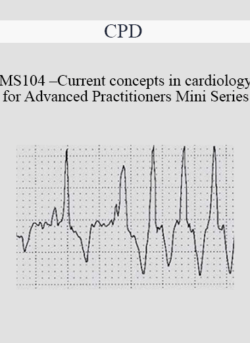 CPD – MS104 – Current Concepts in Cardiology for Advanced Practitioners Mini Series
₹18,924.00
CPD – MS104 – Current Concepts in Cardiology for Advanced Practitioners Mini Series
₹18,924.00
CPD – MS111 – Soft Tissue Surgery Case Challenges for Advanced Practitioners Mini Series
₹18,924.00

